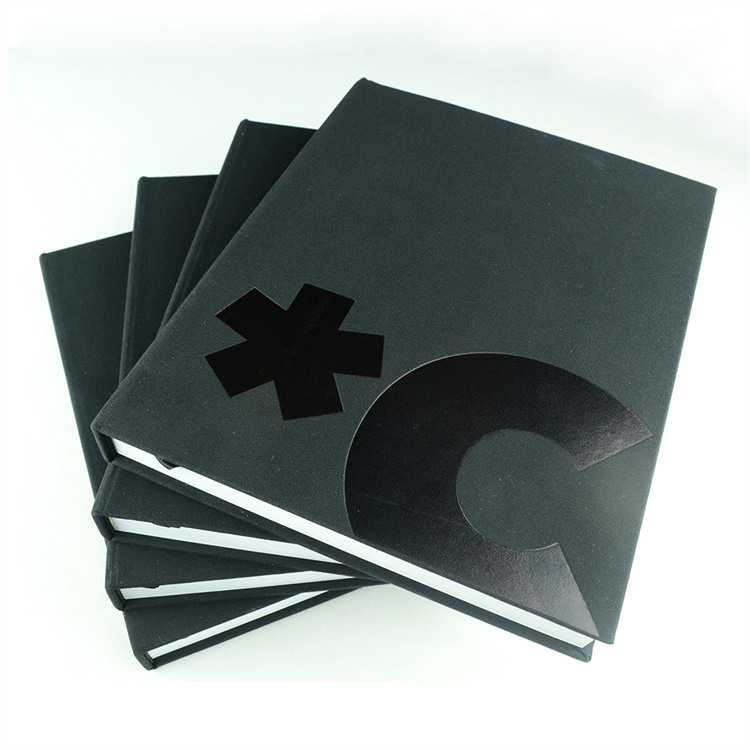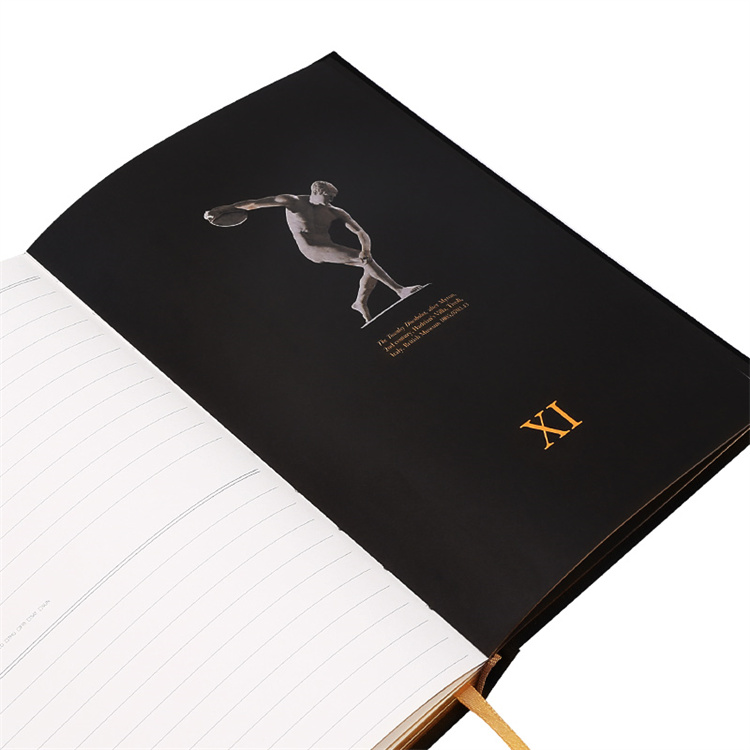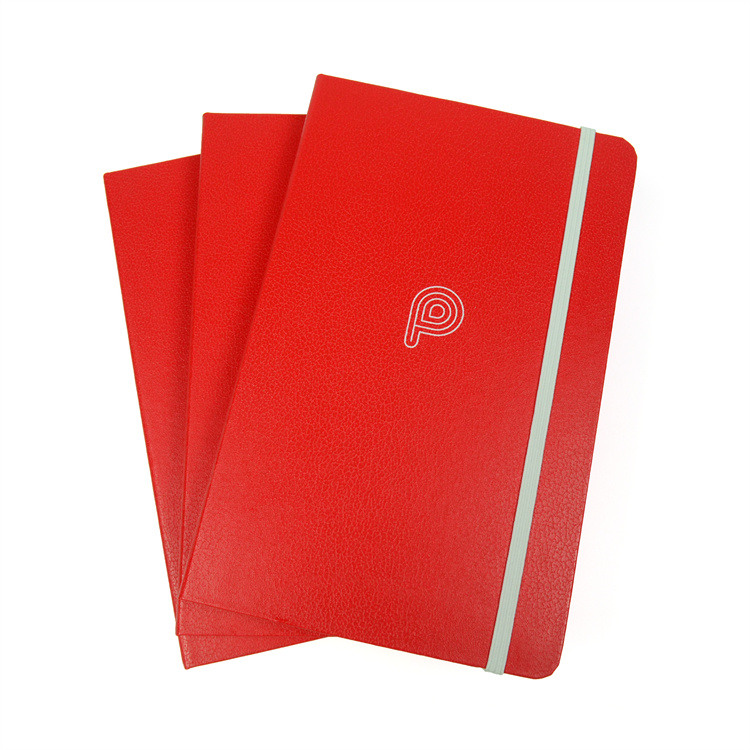How to Choose Materials for Hardcover Notebook Printing from fannyzeng's blog

When it comes to hardcover notebook printing. Selecting the right materials is essential for achieving the desired look and feel. From paper quality to cost factors, there are many considerations that need to be taken into account.
In this blog post, we'll provide a complete guide on how to choose the right material for hardcover notebook printing. Ultimately, this blog post will equip you with all of the necessary information. So that you can make an informed decision when choosing materials for your next hardcover notebook printing project.
Types of material used in hardcover notebook printing
Different types of material are used in hardcover notebook printing, each with its own benefits and cost factors.
Coated paperThe most common cover material used in hardcover notebook printing is coated paper, PU leather, cloth and so on. Coated paper provides a glossy/mette finish. This type of paper has a bright white base that helps images stand out vividly against the cover. Coated paper also has a smooth surface which gives your notebooks a sleek look. Plus, because it is thicker than regular office bond paper. Coated paper is more durable and can protect your valuable ideas from damage or wear-and-tear over time. Also, if you more both high-end and durable look, PU leather or cloth as the cover is a good choice.
Uncoated paperUncoated paper is a popular option for inner pages. Because it is more affordable and has its own unique texture. It has a soft feel that makes writing more enjoyable and gives your notebooks a rustic charm. Plus, uncoated papers are thicker than coated papers. So they offer good protection for your ideas without having to pay extra for additional thickness.
Specialty papersSpecialty papers such as textured, metallic, and colored papers can also be used depending on the desired look for the notebook. Textured papers can add an extra layer of sophistication. while metallic papers give off an eye-catching sheen. Colored papers are great if you want to add some vibrancy to your design or use them as dividers between sections in your book. All three types of specialty papers can bring more personality to any project.
The type of paper chosen should depend on the application of the notebook. For example, coated paper is better for high-resolution images. While uncoated may be best suited for writing on or personalizing with notes or drawings as it’s easier on ink pens compared to coated ones. The thickness of the paper should also be considered. Thicker options will provide more protection against wear and tear but will also add to overall cost. So make sure you take this into account when comparing prices before making a purchase decision..
Ultimately, researching and comparing materials. It will help ensure that you get top quality results at a cost-efficient price point once you start printing your notebooks! By understanding these key considerations beforehand. You’ll be able to make an informed decision when choosing materials for your next hardcover notebook printing project. Ensuring that every page looks perfect!
The benefits of using high quality materials in hardcover notebook printing

The use of high quality materials in hardcover notebook printing. It offers a variety of benefits that can help to create a more durable, aesthetically pleasing, and cost-effective product.
1. Increasing the longevity of the notebookFirst and foremost, using higher quality materials increases the longevity of the notebook. Materials such as coated paper are more resistant to wear and tear, making them better suited for covers with high usage. Furthermore, using specialty papers like textured or metallic. They can give notebooks an extra layer of protection from damage from liquid spills or scratches. This is especially important for notebooks meant for outdoor use or those that need to stand up to a lot of handling over time.
2. Enhancing the aesthetic appeal of hardcover notebooksUsing higher quality materials also enhances the aesthetic appeal of hardcover notebooks. Coated paper is known for its glossy finish and vibrant colors. While uncoated paper has a unique texture that makes it stand out from other types of paper. Specialty papers like textured and metallic offer additional options for creating custom designs. They will make the notebook stand out from the rest.
3. Reducing environmental impactHigher quality materials can also help to reduce environmental impact by using fewer resources in production. Quality materials are generally more durable and resistant to damage. Meaning they require less replacement material over time. Which helps to reduce resource consumption and waste production associated with manufacturing processes. Using higher quality materials can also improve print quality. Resulting in sharper images and text which requires fewer resources overall than lower quality prints do.
The cost factors to consider when choosing materials for hardcover notebook printing

When selecting materials for hardcover notebook printing, there are a number of cost factors to consider.
1. Shipping costShipping costs can vary widely depending on the type and weight of the paper selected. If ordering from overseas, additional customs and import fees may also be applicable.
2. Paper costAdditionally, higher quality paper is likely to be more expensive than lower quality alternatives. So it's important to weigh up the overall cost with the benefits. Such as increased durability and sharper print quality.
3. Complex printing processesMore complex printing processes may also come at an extra cost. For example, if a cover is to be embossed then this will require extra time and skill from the printer, thus incurring additional charges. Other features such as foil stamping may also add to the overall cost of the project. It’s worth considering whether these features are necessary. Or worth investing in before committing to them financially.
Finally, any additional components required for the project. Such as binding covers, should be factored into the total cost of hardcover notebook printing materials.
When choosing materials for hardcover notebook printing projects. It's important to compare prices between different suppliers. And then take into account any additional costs that may arise. By researching and comparing materials ahead of time. You can ensure they get good value for money while still getting high-quality results from their printed products.
Conclusion: Finding the right material for your hardcover notebook printing needs

When it comes to hardcover notebook printing. Finding the right materials can be a daunting task. With so many different types of paper available, it is important to consider all the factors when making your decision. Quality, cost, delivery speed, and any additional printing requirements should all be taken into account. By researching and comparing the different materials available. You can ensure that you get the best quality and cost-efficiency for your project.
It is also important to speak with your printer about any special requirements or adjustments that might need to be made. Experienced printers will have an in-depth knowledge of various papers and their properties. Allowing them to make recommendations based on your specific needs. Additionally, they may even be able to provide samples of different papers. So you can see which one works best for you.
Ultimately, by taking into account all of these factors. You will be able to make an informed decision and choose the right material for your hardcover notebook printing needs. The right material should fit both your budget and expectations. While providing quality results that meet customer standards. Taking the time to research and compare materials. It will ensure that you get a high-quality product at an affordable price.

The Wall